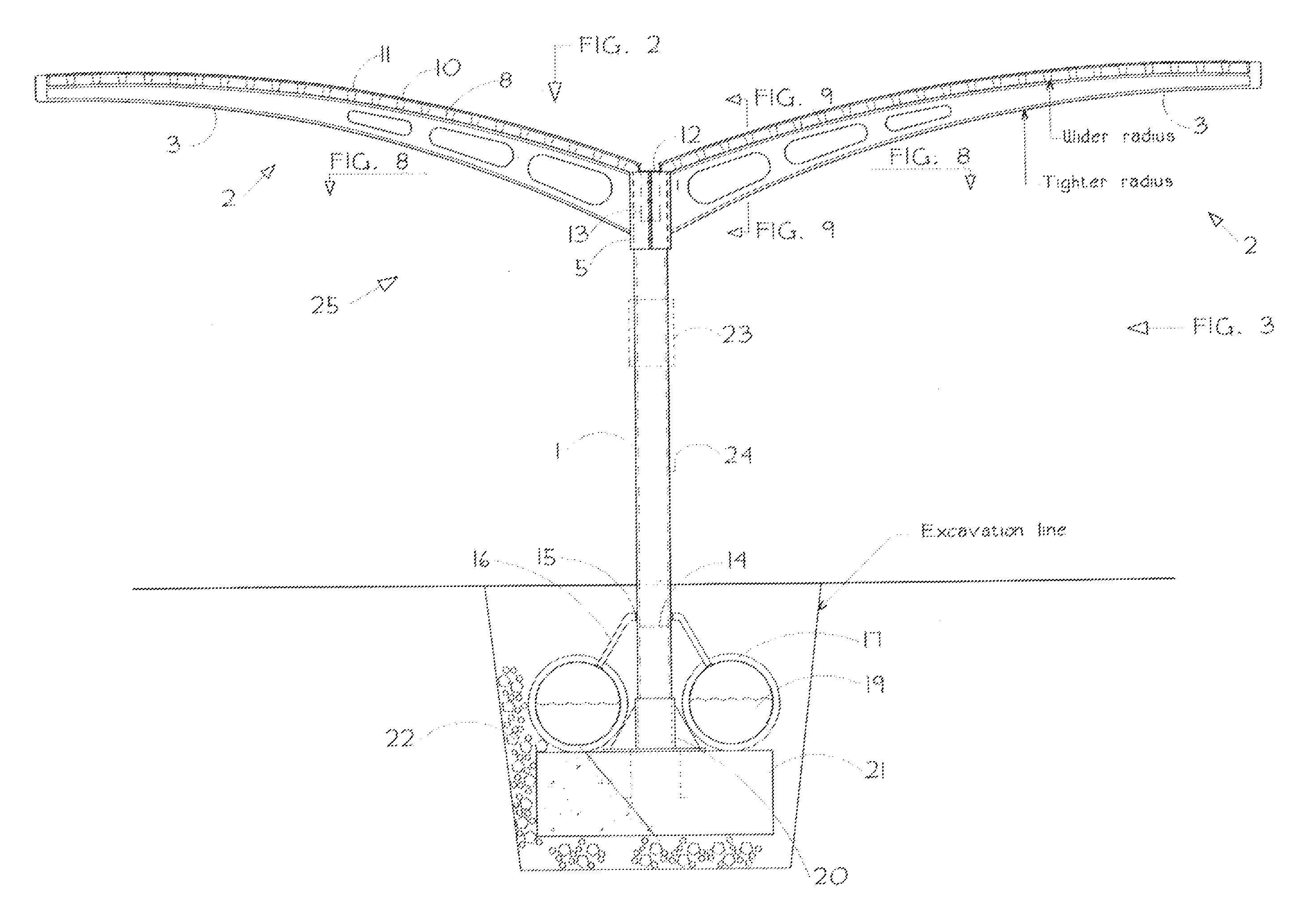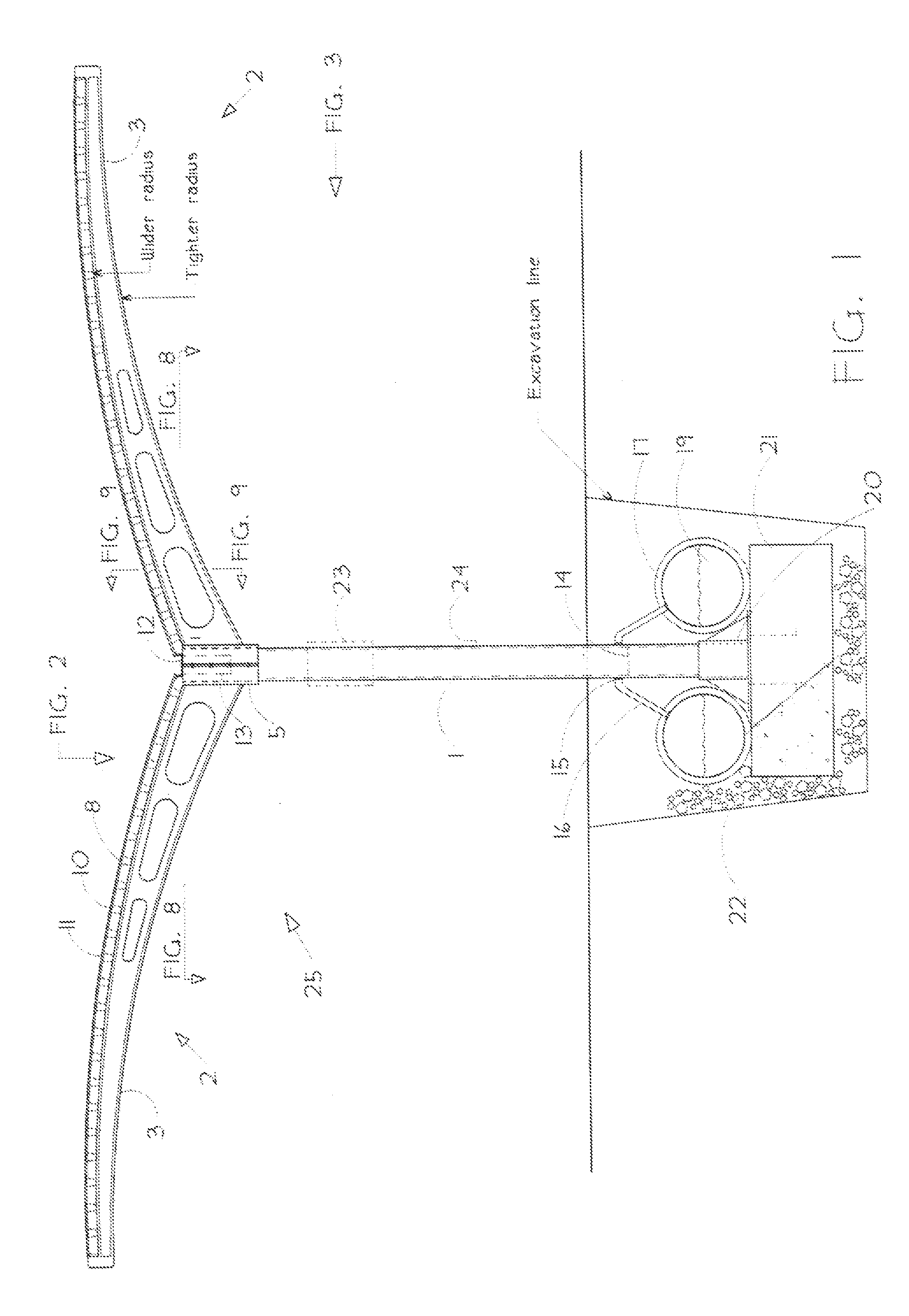Arcuate-winged solar canopy assembly
- Summary
- Abstract
- Description
- Claims
- Application Information
AI Technical Summary
Benefits of technology
Problems solved by technology
Method used
Image
Examples
Example
[0042]FIG. 5 illustrates a second embodiment of the wing structural arm of the assembly in which the plurality of paired, space-apart wing structural arms are eliminated and replaced by a pair of continuous wings that extend longitudinally along the entire canopy structure. The continuous arcuate wings, 40, of this embodiment have an upper panel 43 and a lower panel 44 and are hollow except for one or more fixed braces or spars, 41, extending between the upper panel of the wings and the lower panel of the wings. Like the first embodiment, hollow continuous wings 40 are formed with a low-incident, arcuate, downwardly-sloping curve and are positioned with one end proximal to support column 1 and the other end distal to the support column. Also like the first embodiment, the continuous arcuate wings have proximal ends 45 and distal ends 46 and the proximal ends and are arranged to be in opposed relation to each other forming a structural spine in the assembly. The arcuate curvature in the
PUM
| Property | Measurement | Unit |
|---|---|---|
| Weight | aaaaa | aaaaa |
| Power | aaaaa | aaaaa |
| Weight ratio | aaaaa | aaaaa |
Abstract
Description
Claims
Application Information
 Login to view more
Login to view more - R&D Engineer
- R&D Manager
- IP Professional
- Industry Leading Data Capabilities
- Powerful AI technology
- Patent DNA Extraction
Browse by: Latest US Patents, China's latest patents, Technical Efficacy Thesaurus, Application Domain, Technology Topic.
© 2024 PatSnap. All rights reserved.Legal|Privacy policy|Modern Slavery Act Transparency Statement|Sitemap



